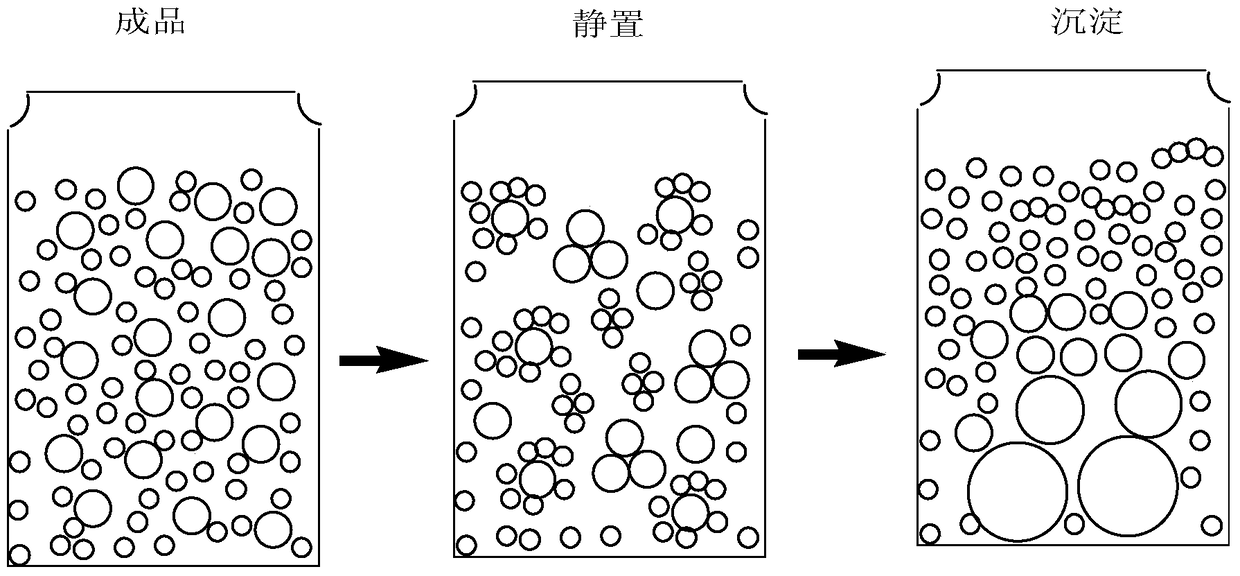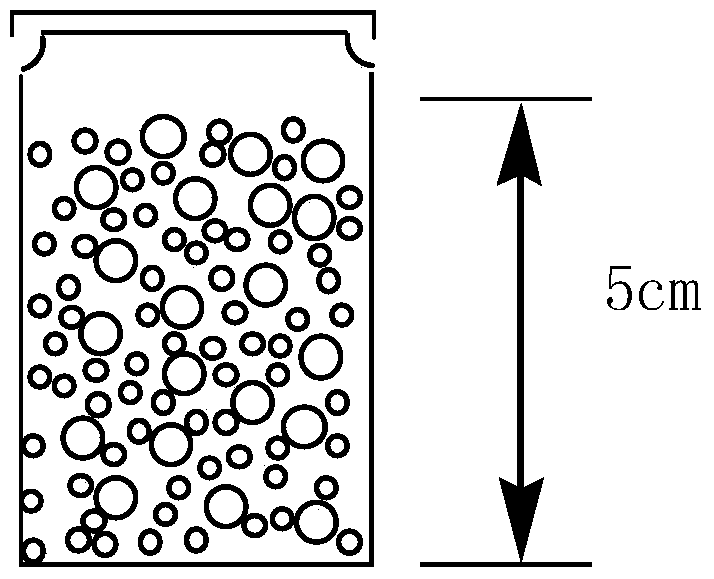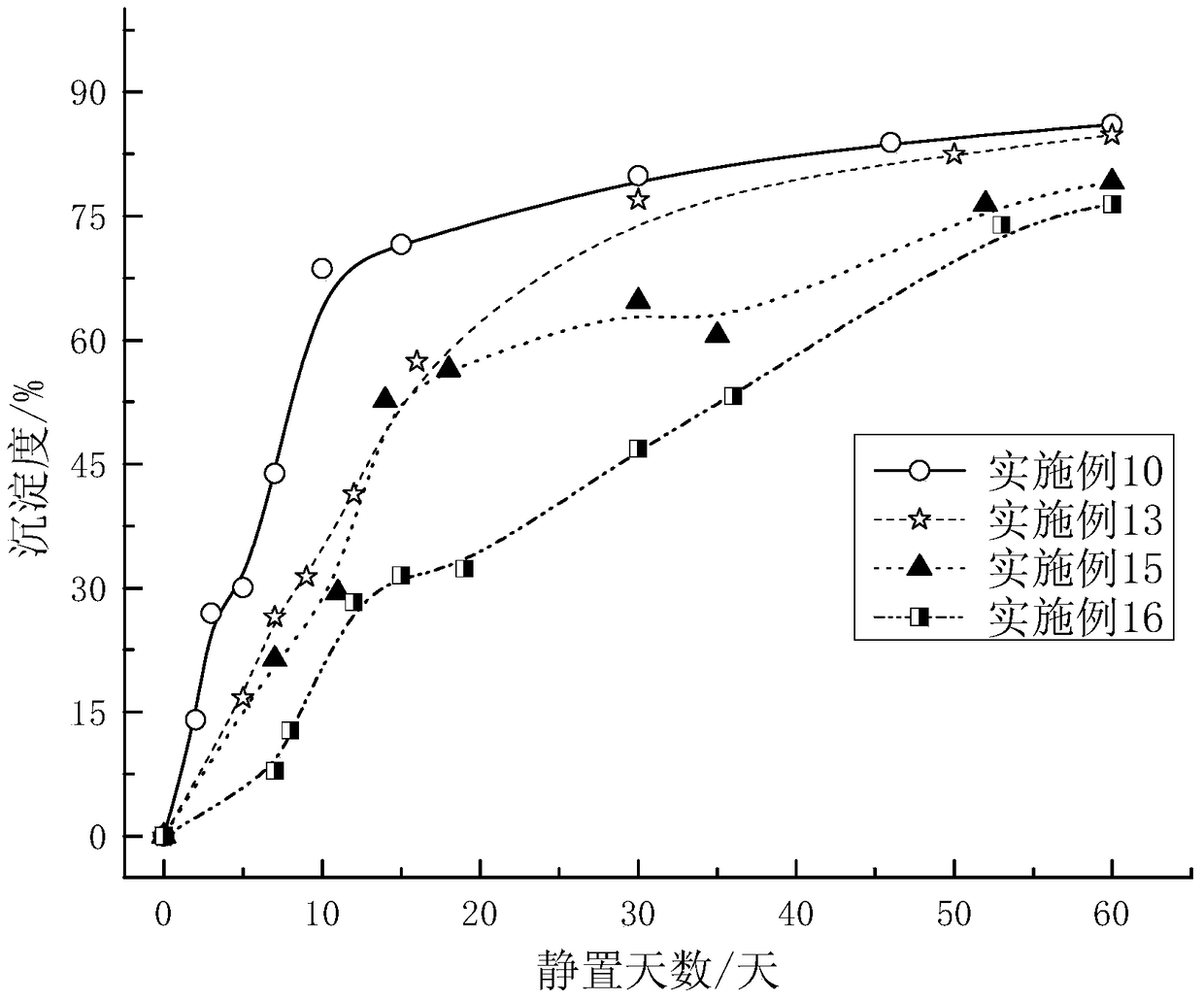A kind of disperse dye slurry that effectively slows down precipitation and its preparation method
A technology for disperse dyes and sizing, applied in organic dyes, dyeing methods, textiles and papermaking, etc., can solve the problems of difficulty in uniform dispersion of dye particles, larger particles, and decreased stability of dye colloidal suspensions, and improve storage stability. The effect of reducing the average particle size and the excellent dyeing and finishing fastness
- Summary
- Abstract
- Description
- Claims
- Application Information
AI Technical Summary
Problems solved by technology
Method used
Image
Examples
Embodiment 1~3
[0056] Without adding urea, after selecting disperse dyes and dispersants for grinding, adjust them into finished disperse dye slurry. The experimental data are according to Table 1:
[0057] Table 1
[0058]
[0059] Precipitation effect detection
[0060] After the disperse dye slurry prepared in the above-mentioned Examples 1-3 was left to stand for a certain period of time, the sedimentation degree was tested according to the method described above, and the results are shown in Table 2:
[0061] Table 2
[0062] Example
[0063] From the test results in Table 2, it can be seen that the amount of dispersant has a significant effect on the precipitation rate of disperse dye slurry. With the increase of the amount of dispersant, the degree of precipitation decreases, and the precipitation of the slurry obviously slows down. Moreover, the disperse dye slurry has a fast precipitation rate within a week of standing, and the precipitation is basically complete afte...
Embodiment 4~9
[0065] Without adding urea, after selecting disperse dyes and dispersants for grinding, adjust the pH value of the slurry with phosphoric acid to make finished disperse dye slurry. The experimental data are according to Table 3:
[0066] table 3
[0067]
[0068] Precipitation effect detection
[0069] After the disperse dye slurry prepared in the above-mentioned Examples 4-9 was left to stand for a certain period of time, the sedimentation degree was tested according to the method described above, and the results are shown in Table 4:
[0070] Table 4
[0071] Example
[0072] The pH value of the finished disperse dye slurry is generally 7 to 8. Too high or too low will affect the storage performance and use performance of the slurry. It can be seen from the sedimentation test results in Table 4 that the disperse dye slurry with different pH values There is little difference in the precipitation speed of the materials, and within the first week, nearly half of ...
Embodiment 10~17
[0074] After the disperse dye, dispersant, and urea are mixed and ground, the finished disperse dye slurry is prepared. The experimental data is according to Table 5:
[0075] table 5
[0076]
[0077]
[0078] Precipitation effect detection
[0079] After the disperse dye slurry prepared in the above-mentioned Examples 10-17 was left to stand for a certain period of time, the sedimentation degree was tested according to the method described above, and the results are shown in Table 6:
[0080] Table 6
[0081] Example
Sedimentation % / 7 days
Sedimentation % / 30 days
Sedimentation % / 60 days
10
43.83
79.85
86.04
11
39.89
78.96
85.81
12
35.41
77.65
85.13
13
26.21
76.96
84.8
14
25.13
71.22
82.27
15
21.37
64.66
79.12
16
7.85
46.83
76.42
17
6.58
40.16
75.18
[0082] It can be seen from the test results of the precipitation degree in...
PUM
 Login to View More
Login to View More Abstract
Description
Claims
Application Information
 Login to View More
Login to View More - R&D
- Intellectual Property
- Life Sciences
- Materials
- Tech Scout
- Unparalleled Data Quality
- Higher Quality Content
- 60% Fewer Hallucinations
Browse by: Latest US Patents, China's latest patents, Technical Efficacy Thesaurus, Application Domain, Technology Topic, Popular Technical Reports.
© 2025 PatSnap. All rights reserved.Legal|Privacy policy|Modern Slavery Act Transparency Statement|Sitemap|About US| Contact US: help@patsnap.com



